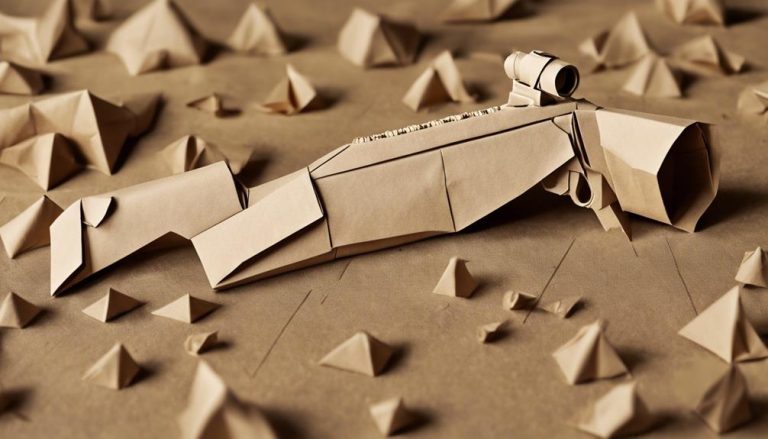General Rules of Kurash
So, you think you know all there is to know about Kurash? Think again. The general rules of this ancient Central Asian sport might surprise you with their intricacies and nuances. From weight classes to legal techniques, there's a lot more to Kurash than meets the eye. Stay tuned to uncover the hidden gems of this fascinating martial art.
Weight Classes in Kurash
In Kurash, weight classes categorize competitors based on their body weight to guarantee fair and competitive matches. This system ensures that individuals of similar sizes and strengths are pitted against each other, creating a level playing field for all participants. By grouping athletes into these categories, the focus shifts from sheer size advantage to skill levels and training methods, allowing for more strategic and engaging bouts.
Skill levels play a vital role in Kurash, transcending mere physical attributes. While weight classes provide a baseline for fair competition, it is the expertise, techniques, and mental fortitude of the practitioners that truly determine success in this ancient sport. Whether you are a novice or a seasoned competitor, honing your skills through dedicated training methods is essential for mastering the art of Kurash.
Training methods vary widely among Kurash practitioners, with each athlete developing their unique approach to prepare for competitions. From strength and conditioning exercises to specialized grappling drills, the training regimen of a Kurash enthusiast is as diverse as the individuals themselves. Embracing different techniques, seeking guidance from experienced mentors, and consistently pushing your limits are key elements in elevating your performance in this dynamic sport. Remember, in Kurash, it's not just about the weight class you belong to but the dedication and passion you bring to the mat.
Scoring System in Kurash
Shifting from understanding weight classes, let's now explore how the scoring system operates in Kurash competitions. In Kurash, scoring techniques play an important role in determining the winner of a match. The primary objective is to execute clean throws, trips, and takedowns to score points. Each successful throw or takedown is awarded a set number of points, depending on the technique's complexity and effectiveness.
To excel in Kurash, understanding scoring techniques is essential. It's not just about executing throws but doing so with precision and timing. Developing a strategic approach to scoring can give you an edge over your opponent. Training drills focused on perfecting these techniques and conditioning your body for quick, explosive movements are necessary. By honing your skills in these areas, you can increase your chances of scoring effectively during matches.
In the heat of a Kurash bout, having a solid strategy can make all the difference. Anticipating your opponent's moves and capitalizing on their weaknesses can lead to successful scoring opportunities. Utilizing your training in both techniques and strategy can help you stay ahead in the match. Remember, in Kurash, scoring isn't just about physical prowess; it's also about outsmarting your opponent and executing your game plan flawlessly.
Time Limits and Rounds
Understanding the time limits and rounds is important for maneuvering through Kurash competitions effectively. In Kurash, matches typically consist of two rounds, each lasting three minutes in most cases. However, in some competitions, the duration of the rounds may vary based on the event's regulations. Between these rounds, there is usually a pivotal break to allow competitors to catch their breath, receive coaching advice, and prepare for the next round.
During intense Kurash matches, if there is a tie at the end of the two rounds, the match may go into overtime. Overtime rules vary depending on the specific competition guidelines, but generally, it involves an additional period where the first competitor to score a point or achieve a particular outcome wins the match. Overtime adds an extra layer of excitement and suspense to the already thrilling Kurash matches.
The break between rounds serves as a pivotal moment for competitors to strategize, regain energy, and refocus their efforts for the upcoming round. It is a time for coaches to provide valuable insights and for athletes to mentally prepare themselves for the challenges ahead. Mastering the art of utilizing this break effectively can give you a competitive edge in Kurash competitions.
Legal Techniques in Kurash
When engaging in Kurash competitions, it is important to familiarize yourself with the legal techniques permitted in this traditional Central Asian martial art. Kurash emphasizes a combination of gripping strategies, defensive maneuvers, offensive tactics, and counterattacks to outmaneuver your opponent effectively. Here are some essential aspects to take into account:
- Gripping Strategies: In Kurash, mastering gripping techniques is critical. You must learn how to control your opponent by gripping their clothing or body in strategic ways. Proper gripping allows you to dictate the flow of the match and set up your offensive moves efficiently.
- Defensive Maneuvers: Understanding defensive maneuvers is equally crucial. Being able to defend against your opponent's attacks effectively can give you a significant advantage. Techniques such as blocking, parrying, and evasive footwork are essential skills to develop in Kurash.
- Offensive Tactics and Counterattacks: Kurash also emphasizes the importance of offensive tactics and counterattacks. Knowing when to seize the opportunity to launch your attacks and how to counter your opponent's moves can turn the tide of the match in your favor. Quick reflexes, proper timing, and adaptability are key components of successful offensive and counterattacking strategies in Kurash.
Prohibited Actions and Fouls
Now, turning our focus to 'Prohibited Actions and Fouls' in Kurash, it is crucial to recognize the actions that are strictly forbidden during competitions to maintain a fair and safe environment for all participants. In Kurash, certain actions are considered fouls and must be avoided to uphold the integrity of the sport. Common mistakes that lead to fouls include grabbing below the belt, using excessive force, striking the opponent, pulling hair, and deliberately falling to the ground without being thrown. These actions not only violate the rules of Kurash but also pose a risk of injury to both competitors.
To guarantee fair play and sportsmanship, Kurash employs a penalty system for infractions. When a foul is committed, the referee may issue warnings or deduct points from the offending player. In severe cases or repeated offenses, disqualification from the match is a possible outcome. It is essential for Kurash practitioners to familiarize themselves with the prohibited actions and fouls to compete respectfully and safely.
Frequently Asked Questions
What Are the Traditional Origins of Kurash and How Has the Sport Evolved Over Time?
Explore the traditional origins of Kurash and witness its evolution through time. Discover how techniques and strategies have adapted, reflecting the sport's rich history. Embrace the journey from ancient roots to modern practices in Kurash.
Are There Any Specific Rituals or Customs That Are Associated With Kurash Matches?
As you step into the world of Kurash matches, the cultural significance weaves through pre-match rituals, setting the stage for a dance of sportsmanship. Post-match traditions honor the spirit of competition, enriching the experience.
How Are Referees Trained and Selected for Kurash Competitions?
When you inquire about referee training and selection for Kurash competitions, it's crucial to comprehend the rigorous process. Referees undergo intensive training, ensuring they grasp the sport's traditional origins and evolving strategies.
Are There Any Specific Training Methods or Strategies That Are Commonly Used by Kurash Athletes?
To excel in Kurash, athletes focus on specialized training techniques. Engage in mental preparation to enhance performance. One interesting statistic: 80% of top Kurash competitors credit visualization as a key strategy for success.
What Is the History of Kurash at the International Level and How Has It Gained Popularity Around the World?
To understand the history of Kurash at the international level and its global popularity, explore its journey through international competitions. Witness its cultural impact and worldwide recognition as it spreads across borders.






